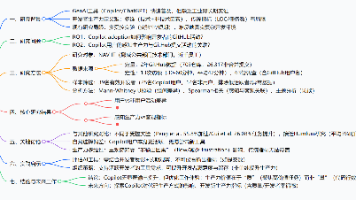深度学习用于文本分类--文本向量化
1、keras实现单词级的one-hot编码from keras.preprocessing.text import Tokenizersamples = ['you got a dream,you got to protect it','everything that has a beginning,has an end']tokenizer = Tokenizer(num_words=100)
·
1、keras实现单词级的one-hot编码
from keras.preprocessing.text import Tokenizer
samples = ['you got a dream,you got to protect it','everything that has a beginning,has an end']
tokenizer = Tokenizer(num_words=100) ##创建一个分词器,参数为设置前100个最常见的单词
tokenizer.fit_on_texts(samples) #构建单词索引
sequence = tokenizer.texts_to_sequences(samples) #将字符串转换为整数索引组成的列表
one_hot_results = tokenizer.texts_to_matrix(samples,mode='binary')
word_index = tokenizer.word_index #找回单词索引
print('found %s unique tokens.'%len(word_index))
#found 13 unique tokens.2、词嵌入
用 Embedding 层学习词嵌入
from keras.layers import Embedding
embedding_layers = Embedding(input_dim,output_dim) #参数分别为最大单词索引+1,嵌入维度Embedding 层输入的是二维整数张量,返回一个三维浮点数张量
使用预训练的词嵌入(以Glove词嵌入为例)
##解析Glove词嵌入文件
glove_dir = 'Download/glove.6B'
embedding_index={}
f = open(od.path.join(glove_dir,'glove.6B.100d.txt')
for line in f:
values = line.split()
word = values[0]
coefs = np.asarray(values[1:],dtype='float32')
embedding_index[word]=coefs
f.close()
print('found %s word vectors.'% len(embedding_index)
##Glove词嵌入矩阵
embedding_dim = 100
embedding_matrix = np.zeros((max_words,embedding_dim))
for word,i in word_index.items():
if i < max_words:
embedding_vector = embedding_index.get(word)
if embedding_vector is not None:
embedding_matrix[i]=embedding_vector
##根据自己需求定义模型
from keras.models import Sequential
from keras.layers import Embedding, Flatten, Dense
model = Sequential()
model.add(Embedding(max_words, embedding_dim, input_length=maxlen))
model.add(Flatten())
model.add(Dense(16, activation='relu'))
model.add(Dense(1, activation='sigmoid'))
model.summary()
#模型中加入词嵌入
model.layers[0].set_weights([embedding_matrix])
model.layers[0].trainable = False #需要冻结 Embedding 层更多推荐
 已为社区贡献6条内容
已为社区贡献6条内容









所有评论(0)